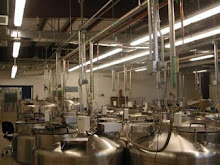In popular culture, cryogenic freezing is known as a scientific device by which people who are eager to witness to the future – or who are simply rich enough to – freeze their own bodies after death, in hopes that future medical science will have advanced enough to revive them.
Historical figures like Walt Disney have been suspected of cryogenically freezing themselves, and fictional ones like Austin Powers have parodied the process. Real-life scientists have actually done it, like Robert Ettinger, founder of the Cryonics Institute in Michigan, who froze family members after they died and has been frozen himself after passing only a few weeks ago; and Robert Nelson, a television repairman who joined the movement in the 1960s and will be depicted in a movie based on his life directed by Errol Morris with his character played by Paul Rudd.
Outside the science fiction and real-life hype, however, cryogenics is actually a significant part of the average person's life. Workers in hospitals and labs are more aware of this. Entire rooms are used to keep cryogenic storage safe, whether it is a liquid nitrogen dewar or a cryogenic freezer.
Cryogenic equipment is relied on to keep important body tissues preserved, like blood and stem cells. Some people choose to cryogenically freeze umbilical cord blood, for scientific research or potential use in the future. Cryogenic storage is commonly used in fertility clinics, where liquid nitrogen equipment is used to preserve human semen and eggs, embryos, and ovarian tissue. Many people who have experienced fertility problems have thus benefited from this practical use of cryogenic equipment. Cryogenics is more than simply scientific entertainment; it's an important tool in hospitals and medicine.
Subscribe to:
Post Comments (Atom)

No comments:
Post a Comment